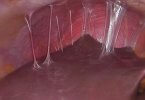What's in this article?
What is Typhoid Fever?
Typhoid is an infection caused by the bacteria Salmonella typhimurium. The bacterium lives in the intestines and bloodstream of humans. It is spread between individuals by direct contact with the faces of an infected person.
No animals carry this disease, so transmission is always human to human.
If untreated, around 1 in 4 cases of typhoid end in death. If treatment is given, less than 4 in 100 cases are fatal.
S. typhi enters through the mouth and spends 1-3 weeks in the intestine. After this time, it makes its way through the intestinal wall and into the bloodstream.
From the bloodstream, it spreads into other tissues and organs. The immune system of the host can do little to fight back because S. typhi can live within the host’s cells, safe from the immune system.
Typhoid is diagnosed by detecting the presence of S. typhi via blood, stool, urine, or bone marrow sample.
How Do People Get Typhoid Fever?
Typhoid fever is contracted by drinking or eating the bacteria in contaminated food or water. People with acute illness can contaminate the surrounding water supply through stool, which contains a high concentration of the bacteria. Contamination of the water supply can, in turn, taint the food supply. The bacteria can survive for weeks in water or dried sewage.
About 3%-5% of people become carriers of the bacteria after the acute illness. Others suffer a very mild illness that goes unrecognized. These people may become long-term carriers of the bacteria even though they have no symptoms and be the source of new outbreaks of typhoid fever for many years.
Who is at risk of Typhoid Fever?
Typhoid fever is common in most parts of the world except in industrialised regions such as the United States, Canada, western Europe, Australia, and Japan, so travellers to the developing world should consider taking precautions. Travellers to Asia, Africa, and Latin America are especially at risk, and the highest risk for typhoid is in south Asia.
About 300 people get typhoid fever in the United States each year, and most of these people have recently traveled. About 22 million cases of typhoid fever and 200,000 related deaths occur worldwide each year.
Signs and symptoms of Typhoid Fever
Persons with typhoid fever usually have a sustained fever as high as 103° to 104° F (39° to 40° C). They may also feel weak, or have stomach pains, headache, or loss of appetite. In some cases, patients have a rash of flat, rose-coloured spots. The only way to know for sure if an illness is typhoid fever is to have samples of stool or blood tested for the presence of Salmonella Typhi.
Treatments for Typhoid Fever
Antibiotic therapy is the only effective treatment for typhoid fever.
Commonly prescribed antibiotics
- Ciprofloxacin (Cipro). In the United States, doctors often prescribe this for nonpregnant adults.
- Ceftriaxone (Rocephin). This injectable antibiotic is an alternative for people who may not be candidates for ciprofloxacin, such as children.
These drugs can cause side effects, and long-term use can lead to the development of antibiotic-resistant strains of bacteria.
Problems with antibiotic resistance
In the past, the drug of choice was chloramphenicol. Doctors no longer commonly use it, however, because of side effects, a high rate of health deterioration after a period of improvement (relapse) and widespread bacterial resistance.
In fact, the existence of antibiotic-resistant bacteria is a growing problem in the treatment of typhoid fever, especially in the developing world. In recent years, S. typhi also has proved resistant to trimethoprim-sulfamethoxazole and ampicillin.
Other treatments
Other treatments include:
Drinking fluids. This helps prevent the dehydration that results from a prolonged fever and diarrhea. If you’re severely dehydrated, you may need to receive fluids through a vein (intravenously).
Surgery. If your intestines become perforated, you’ll need surgery to repair the hole.






Leave a Comment